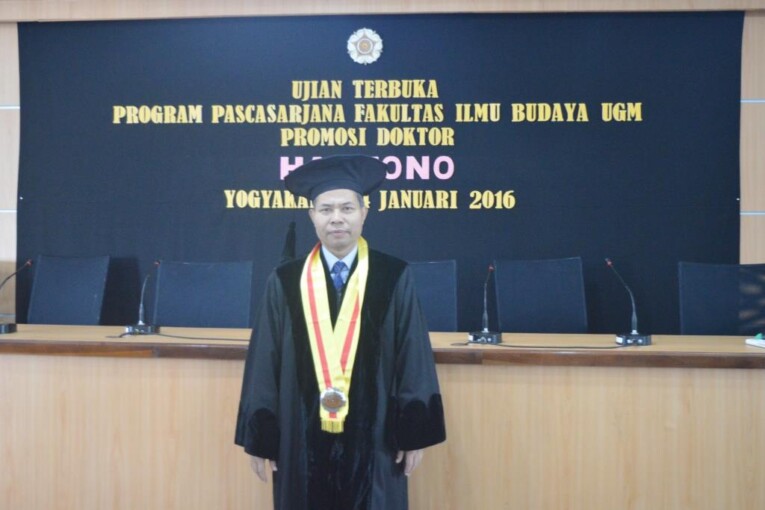
The Javanese local atmosphere can be found mostly in Indonesian novels in the period between 1980-1995. For instance, novels Para Priyayi by Umar Karyam, Canting by Arswendo Atmowiloto, or Ronggeng Dukuh Paruk by Ahmad Tohari. These novels carry strong atmosphere of Java whether in location, arts, local belief, social status, local language or the naming of time background, plants and animals.
“Between year 1980 and early 1990, Indonesian novels were marked with local atmosphere or sensibility whilst the writers tended to raise local culture based on their socio-cultural backgrounds,” said lecturer from Faculty of Language and Arts of Yogyakarta State University, Hartono, M.Hum., in his open doctoral exam on Monday(4/1) at Faculty of Cultural Sciences UGM.
In the Ronggeng Dukuh Paruk trilogy, the local atmosphere of Banyumas area was depicted through the life of a traditional dancer (ronggeng) with the description of a hamlet that has not been influenced by modern cultures. Along the story, readers are able to grasp the local cultural elements, such as traditional belief of the spirits of the ancestors, customary practices as well as social issues that includes prostitution issue that is close to the ronggeng tradition.
The strengthened uses of local Javanese atmosphere in his opinion was one attempt to avert government’s suspicion. During those times the government often censored literary works that were considered disrupting security and public order. Writers eventually opted to tell the story of local experiences in a small remote area in order that these can escape from government censorship.
The use of local atmosphere was also to develop local cultures and increase people awareness of the richness of the national culture. “Through the local atmosphere in literary works, society can gain education and moral messages that promote mutual respect between cultural ethnic groups,” said Hartono.


